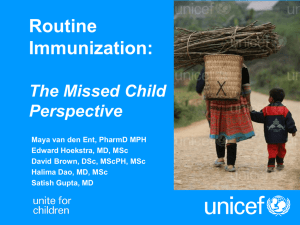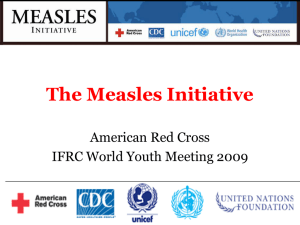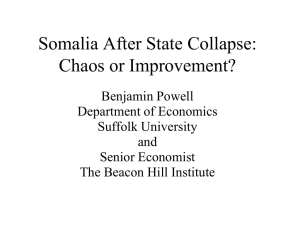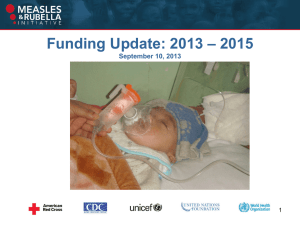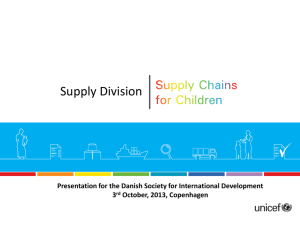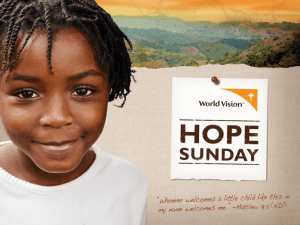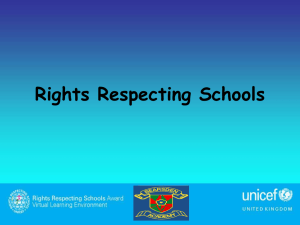Measles Vaccination in Emergency Setting
advertisement
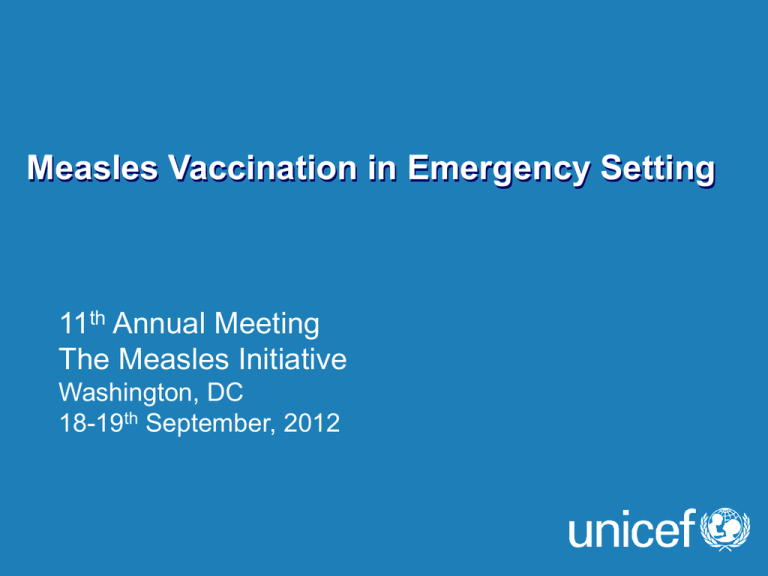
Measles Vaccination in Emergency Setting 11th Annual Meeting The Measles Initiative Washington, DC 18-19th September, 2012 “Immunization of children against measles is probably the single most important (and cost - effective) preventive measure in emergency – affected populations, especially those living in camps” M Toole and R Waldman Annual Rev Public Health 1997;18-283-312 • Vaccinate all children between 6 months and 14 years of age against measles • Provide vitamin A supplementation • Provide vaccines and critical inputs such as coldchain equipment, training and social mobilization expertise • Provide other emergency supplies such as blankets, tarpaulins and cooking sets. • Introduce nutritional monitoring and surveillance • Support the establishment of essential health-care services • 2 Provide essential drugs, emergency health kits 2011 Specific UNICEF SD MCV for Emergencies: Libya; DR Congo; Burkina Faso; Kenya Guinea; South Sudan; Tunisia; Mauritania Ethiopia; Cote3 d’Ivoire; Pakistan 4 Mali -highlights Mali routine MCV1 Coverage & SIAs 120% 97% 100% 91% 87% 86% 86% 89% 81% 80% 75% 75% 2003 2004 64% 60% 61% 53% 40% 20% 0% 2000 2001 2002 2005 5 2006 2007 2008 2009 2010 2011 Mali -highlights • 3 regions (Gao, Kidal & Tombouctou), occupied by separatist rebels. • Displaced populations • Disrupted health services. • Missed 3 rounds Polio Decision process • Activation of the health cluster under WHO lead • Sent a field assessment team; identified partners capable to work in the context. – Timbuctu with Group Pivot Sante (GPS) and ALIMA – Kidal with Medecin du Monde Belgique – Gao with FENASCOM. 7 Planning and preparation • Service contract (PCA) between UNICEF and the NGOs in collaboration with MOH.(activities, strategies & budget) • Endorsement of the PCA by the health cluster. • Coordination committee: (MOH, NGOs, UNICEF, WHO) • Cold chain rehabilitation; Supply vaccines and other items • Training of vaccinators and supervisors. 8 Implementation • • • • • • • • • • Target measles: 278,076 Duration: From June 25th onwards Socio mobilization 41 teams of 4 vaccinators in Timbuktu & Kidal Supervision: national, regional and districts supervisors Data collection, analysis and reporting Waste management Strong support from local authorities/community leaders No security problems for vaccinators No case of severe AEFI notified 9 Dire campaign with ALIMA (25 April-4May;) 70,000 59,414 60,000 50,000 43,507 40,000 28,362 30,000 20,000 Target 24,757 22,281 19,105 Realized 8,171 10,000 1,255 0 OPV (0-59 mths) Measles (6 mths-15 yrs) Vit A (6-59 mths) Kidal campaign with MDM-B Deworm (12-59 mths) (25 June-18 July Partial results) 4,500 4,000 3,846 3,846 3,364 3,500 3,000 2,500 3,364 3,147 2,623 2,380 2,339 2,122 1,843 2,000 Realized 1,500 1,000 500 0 10 Pentavalent vaccine OPV Measles Target Vitamine A Deworming RESULTATS VACCINATION, SUPPLEMENTATION, DEPARASITAGE & DEPISTAGE ACTIF DE LA MALNUTRITION CHINAGODRAR 27 au 29 février 2012 Outcome • Successful integrated measles campaign in the Islamist stronghold region of Timbuktu and later Kidal and Gao paved the way for more humanitarian interventions in the future; • Many health centers revitalized and can provide routine immunization on a regular basis • Vaccine supply to the north region subsequently easier • More local staff trained on immunization and may be utilized for upcoming polio and MNTE campaign. Upcoming SIAs (Particularly Polio) will be feasible in the northern regions • Reinforcement of collaboration and coordination among partners 12 Measles Control during the 2011 Horn of Africa Emergency The context situation/crisis • 2011: severe drought in the Horn of Africa, and the conflict in Somalia precipitated a crisis. • Early July 2011: hundreds of thousands of people on the move, fleeing famine and conflict, into neighboring countries. • 13.3 million needed humanitarian support in Somalia, Kenya, Ethiopia and Djibouti, including 700,000 Somali refugees. 1.5 million displaced people inside Somalia. Half of those in need were children. • More than 320,000 severely malnourished children in the four countries; 15 Context: Measles situation • 2010- 2011: 16,135 reported measles cases in Somalia. 78% were children <5yrs. Most from South and Central Zone (SCZ). • SCZ of Somalia was totally inaccessible for Child Health Days (CHDs) or routine EPI for more than 2yrs due to armed conflict. • 2010-2011: Ethiopia: 9,756 cases; Kenya: 2,566 cases with wide age distribution. 16 Coordination Mechanism For Health Response At Regional Level: • At the regional level the WHO-AFRO and UNICEF-ESARO set up a HOA emergency Health Group with key partners in health. • The HOA emergency health group (UNICEF, WHO, UNHCR, CDC, UNFPA, OFDA and other NGOs) met every week. At the Country Level: • Somalia UNICEF and WHO reactivated the Health Cluster (SACOB) to coordinate the health response: developed a joint plan for Measles SIAs. • Kenya and Ethiopia: health response coordinated by government. WHO and UNICEF worked with the government at the national and sub-national levels to support the emergency response. 17 Resource mobilization/allocation • HoA drought since late 2010; funding needs built into the 2011 interagency CAP for Somalia and Kenya. • Ethiopia and Djibouti: funding needs included in the UNICEF’s Humanitarian Action for Children (HAC) appeal. • Escalation of crisis triggered scale up UNICEF’s response. UNICEF issued a revised appeal in July 2011 – The Exec. Director Anthony Lake visited regions of Turkana in Kenya – The ED activated UNICEF’s procedures for a Level 3 Corporate Emergency – Key UNICEF allies joined efforts to draw international attention to the crisis • UNICEF secured US$ 405.7 million (96%) of the total appeal. • NB. Somalia had in stock 5 million doses of MCV in Nairobi 18 UNICEF secured US$405.7 million, 96% of the total requirement for the 2011 HOA Crisis Response Source of Contribution for the 2011 HOA Crisis through UNICEF Government Donors 13% Private Sector Contribution through UNICEF National Committees 28% 59% Inter-organization al arrangement, CERF 19 Planning and preparations Somalia • Consultative group (country, regional and global) organized through regular conference calls. • CDC staff assigned to UNICEF Somalia. • UNICEF provided cold chain equipment, vaccines, devices, other supplies and technical Kenya • Nursing students and tutors were mobilized to fill the HR gap during the vaccination campaign. 20 Emergency Response Measles Immunization Somalia: • 1,074,331 children aged 6 months to 15 years received measles vaccination out of the 2.9 million targeted • 1,009,401 children received vitamin A supplementation out of the 1.3 million targeted • Over 426,354 received de-worming medication out of the 1.1 million targeted. • 465,505 children under 5 years received Oral Polio Vaccine • 210,611 women of child bearing age vaccinated against tetanus toxoid. – Central and South Zones missed due to insecurity. 21 Emergency Response Measles SIAs Kenya: • Integrated measles vaccination conducted in Dadaab refugee camp and the host communities in August 2011. – 170,800 children 6 to 59 mo vaccinated with Measles (107%). – 189,000 children received OPV – 167,900 children received Vit A • Additional measles campaign conducted in the three Dadaab refugee camps targeting those aged 15-30yrs and reached 79,078 people ( 86%) • Support to routine immunization - allocation of cold chain equipment and other supplies. Coverage reported at 100% in the camps and all new arrivals. 22 Emergency Response Measles Immunization Activities Ethiopia • 151 districts selected based on nutritional status and risk for measles outbreaks Measles SIA Prioritized Woredas • 7 million children age 6mo to 15yrs vaccinated against measles (96% coverage) • 3 million kids received OPV 23 Observations • The regional level inter-agency HOA health emergency group created a forum to discuss technical issues around disease control, prioritize activities and facilitate cross border coordination. • The technical consultations for measles through emergency teleconference facilitated the decision making in Somalia. • UNICEF played a significant role through leadership of the humanitarian clusters for Nutrition, Water, Sanitation and Hygiene and Education sectors. Collaboration between UNICEF & WHO to provide technical assistance to the affected countries • The use of the polio network in Somalia for early warning and disease control. • UNICEF mobilized 248 personnel from ESA countries and global level to support the four countries and the regional office 24 Observations • Challenge remains accessing South and Central Zone of Somalia • The mass displacement meant that planning and managing interventions with scarce / fluid data on population movements, made it difficult to determine coverage nor impact of interventions • Lack of clear guidance and differentiation for preventive mass measles vaccination campaign in emergencies and outbreak response measles vaccination campaign 25 26 DRC outbreak Response vaccination activities: • Province Orientale : Outbreak response SIAs postponed because of the outbreak of epidemic hemorrhagic fever. • Equateur:: ORI being organised. Launch done on Sept 11, 2012. • For the provinces of Bas-Congo, Bandundu, Kasaï-Oriental and Kinshasa: 1,000,000 doses MCV received, and to be distributed to the provinces starting 11 Sept 2012. However, a gap of USD 568,778 Ops costs. • Katanga: Response SIAs 22- 26 Aug - with 997,940 children reached in 10 ZS as of day 5 – 98% of target. Data completeness almost 100% except for two districts. • Kasaï-Occidental: ORI launch on 22 Aug in all districts reaching a total of 348176 (104%) of target in 5 ZS. • Nord-Kivu: 175,467 children reached in 1 ZS (103% of target). • Maniema: A total of 81,247 children reached in 2 ZS (96% of target). 27 Syria crisis – refugee popln. various countries Aug 12 28 Conclusion • Measles vaccination in emergencies is occurring under UNICEF’s CCC and in collaboration with various actors: Govts, NGOs on the ground, UNHCR, WHO. • Global documentation is sub-optimal and probably difficult to capture. • Small scale activities take place over time with the trickle of displaced persons using local resources. • Resource mobilisation for emergency measles vaccination is “probably easier – especially with high level visits to highlight the urgency and plight of children. • There are grey areas between outbreak response and preventive SIAs. 29
